Stavros Halvatzis's Blog, page 26
April 28, 2019
Story Through Character
 Story through character in Scarab 2
Story through character in Scarab 2Story through Character. But what comes first, character or story? Does story create the character, or character create the story? This perennial chicken-or-the-egg question has many supporters on either side. The topic has serious implications for the way we approach writing a novel or screenplay.
One of the dangers facing an inexperienced writer crafting what he considers to be a thrilling action-packed story is that he may loose sight of writing story through character. One big event slams into another, and before he knows it, he’s written a story which uses characters like puppets in the hands of a novice puppeteer – their movement is trite, abrupt, and artificial.
So how do we avoid this without sacrificing pace and excitement in the stories we tell, or, without weighing down our thinking with reams of character traits and back-story?
The simplest and most unobtrusive way to do so, I’ve found, is to take the central thought/philosophy/emotion of a character and keep it foremost in mind when writing the scenes.
In my science-fiction novel, Scarab II, the protagonist, Jack Wheeler is drawn into a rerun of the cataclysmic events that unfolded in the North West Province of South Africa some five years previously.
In Scarab 1, Jack is swept along by events, forced to react rather than initiate action. But in the follow-up novel, Jack has a better understanding of what lies in store. He is also haunted by what occurred in the past and driven by one overpowering question: can he do anything to prevent the suffering and mayhem that is standard fare in the world today?
This question, born out of a troubled conscience and the knowledge that he may indeed have the power to intervene, motivates most of his underlying thoughts and actions. Understanding this essential aspect of Jack’s character allowed me to write scenes that are powerfully motivated – an important part of fleshing out an inner journey that explains and fuels the outer one.
Summary
Identifying the essential preoccupation of each character, and keeping this foremost in mind as you chart the outer journey, allows you to write scenes that are inwardly motivated and stay on track.
Tweet
The post Story Through Character appeared first on Stavros Halvatzis Ph.D..
April 20, 2019
Winning Story from Winning Concept
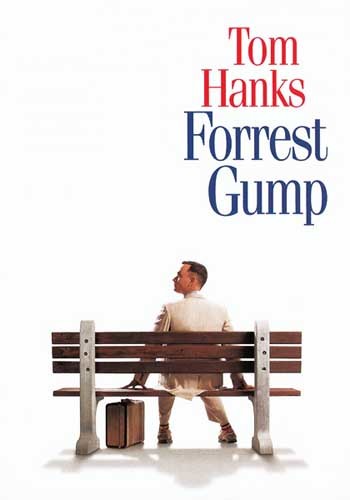 Winning story – Forest Gump
Winning story – Forest Gump Winning story
How do you come up with a winning concept that gives rise to a winning story? In other words, how do you take an idea and turn it into a concept that causes movie producers or book publishers to sit up and take notice?
Start with the Basic Idea. Let’s say you have an idea for a story that goes something like this:
A story about the dangers of DNA experimentation.
Or
A story about a psychopath who skins his victims alive.
Or
A story about a man who keeps ending up in extraordinary situations.
Put the ideas in a “What-if format”:
1. What if unregulated experimentation with the DNA structures goes wrong?
2. What if an ordinary man keeps ending up in extraordinary situations?
3. What if a psychopath, who skins his victims alive, keeps evading the police?
How modifiers make for winning stories
Modifiers are specific techniques used to trigger or inspire an improvement to the story idea. Listed below are some of the most important ones:
1. Take the idea to an extreme level.
2. Collide two opposites together.
3. Raise the stakes.
4. Make the environment unique.
5. Ensure you have the most appropriate main character.
6. Ensure you have special inter-character relationships.
7. Include a unique dilemma.
8. Ensure it has a powerful twist.
9. Change the sex, age, race, nationality, species.
10. Change the norm.
11. Ensure your plot includes a fascinating plan or strategy.
Here are three examples of modifiers used to create a winning story:
If we apply Modifier 1 to our first example, (what if unregulated experimentation with the DNA structures goes wrong), we might end up with a story about a theme-park full of prehistoric animals grown from the DNA acquired from the blood of mosquitos preserved in raisin—Jurassic Park.
Applying Modifier 2 to example 2 (what if an ordinary man keeps ending up in extraordinary situations), we could end up with a story about a simple-minded man who accidentally acquires wealth and becomes part of the most important political events of the 1960’s—Forrest Gump.
Applying Modifier 6 to example 3 (what if a psychopath, who skins his victims alive, keeps evading the police), might inspire us to come up with a story about a young female FBI agent who enlists the help of a brilliant cannibalistic psychiatrist who agrees to help her in exchange for playing mind-games with her—Silence of the Lambs.
As an exercise, try applying the remaining modifiers to some of your existing story ideas.
Summary
Taking an ordinary idea, putting it in a what-if format, and applying a modifier to it often strengthens the central concept and helps you write a winning story.
Tweet
The post Winning Story from Winning Concept appeared first on Stavros Halvatzis Ph.D..
April 13, 2019
Character identification in stories—how to achieve it.
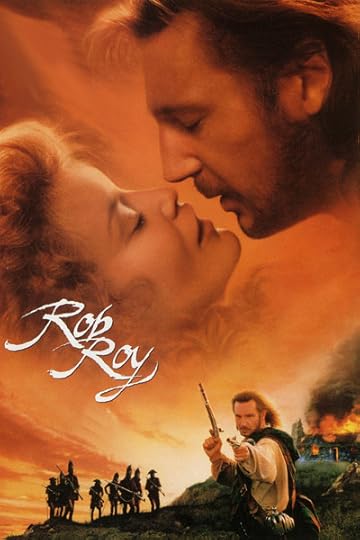 Rob Roy is a great story made greater through the use of strong character identification
Rob Roy is a great story made greater through the use of strong character identification A well-crafted film script or novel contains strong character identification—characters we can identify with. At the very least, it allows us to identify with the protagonist , if we are to be drawn into the tale at all. By identification I mean the tendency to experience part of a character’s achievements, failures, foibles, likes and dislikes, as if they were our own.
Identification is not the same as liking the character, although, in a traditional story, it is one of the most important elements.
Because character identification helps to draw us into the story more effectively than is otherwise possible, it is one of the most important story-telling skills to master.
In his book, Writing Screenplays That Sell, Michael Hague lays out several ways to achieve this. Here’s six of the most important:
1. Create sympathy for your characters. This is one of the most effective ways to achieve identification with a fictional character. A character that has been made the victim of some undeserved misfortune is a someone we can root for — Ghandi, Joan of Arc, Rob Roy are all people that did not deserve the punishment meted out to them.
2. Place your character in peril. Worrying about a character’s well-being draws us closer to him. In The Matrix we worry that Neo’s conflict with agent Smith will result in his death. This forces us identify with his predicament even more.
3. Make your character likable. The more we like someone the more likely we are to root for him. A character that is funny (Inspector Clouseau), good (William Wallace), or merely skilled at what he does (Dirty Harry), posses traits that make him likable.
4. Make your character powerful. Readers and audiences are fascinated with powerful figures. Superman’s arch enemy, Lex Luthor, holds our interest precisely because his is a powerful enemy.
5. Introduce your protagonist as soon as possible. The reader is waiting for someone worthy to root for. The sooner you bring him into the fray, the sooner the process of identifying with him can begin.
6. Give your character flaws and foibles. We often identify with a character who is quirky, awkward or clumsy precisely because we recognise some of these characteristics as our own. In my best selling novel, Scarab, the protagonist refuses to get rid of his old bell-bottom trousers and keeps a bowl filled with milk for his dead cat as if she were still alive.
Summary
Achieve a stronger and more engaging story by creating character identification with your protagonist through these six techniques.
Tweet
The post Character identification in stories—how to achieve it. appeared first on Stavros Halvatzis Ph.D..
April 6, 2019
The Page Turner—how to write it.
 Joseph Conrad’s Heart of Darkness is a great page turner.
Joseph Conrad’s Heart of Darkness is a great page turner.The page turner. It’s every writer’s dream to write a novel or script that the reader simply can’t put down until the last page. But how do we go about achieving this result? Below are some suggestions.
Include hooks whenever possible: A hook is an action or event that draws us into the story in an compelling way. Use hooks to kick-off your story, as well as to bolster interest at the beginning or end of your scenes.
Write with attitude: Use punchy, or concrete language, depending on the subject matter, that bristles with attitude. Middle-of-the road, or non-comital language is boring. What is the writer’s attitude towards the events being described? What is the character’s? Make sure attitudes are strongly revealed.
Write in a way that creates suspense: The famous film director, Alfred Hitchcock, was renowned for creating suspense in his movies. He said that surprise lasts for a few seconds, but suspense may carry the whole scene, or even the entire movie.
Create Anticipation: Anticipation causes us to want to know what the next action, event, or outcome of a situation is likely to be. It differs from suspense in that it does not necessarily involve a threat, or danger.
Anticipation may be introduced in dialogue, through a character talking about a forthcoming event, in a conversation with another, or through a major story goal being set—such as the hero winning or failing to win the prize at the end of the tale.
Create Uncertainty: Introduce uncertainty about the outcome of specific events, your Hero’s ability to achieve her goal, or the way the story will end. The reader will keep turning the pages in order to find out.
Write with emotion: Writing with emotion means that your characters makes us feel their joy, pain, and sensitivity as if they were our own. My mentor, the South African film director, Elmo De Witt used to say that a story without emotion is a story that doesn’t get read. He couldn’t have been more right. Inject emotion into your writing and watch those pages turn.
Although there are others, these six simple techniques, deftly handled, will help to turn your story into a page turner that readers will find hard to put down.
Summary
Hooks, attitude, suspense, anticipation, uncertainty, and emotion are six ways to help you create a page turner. Use one or more of these techniques whenever possible.
Tweet
The post The Page Turner—how to write it. appeared first on Stavros Halvatzis Ph.D..
March 30, 2019
Scene Description — the basics
 A scene description sets the mood, action and character of a scene
A scene description sets the mood, action and character of a sceneWhat is meant by scene description? In a screenplay, dialogue is one of the few things that survives “as is”, albeit in a different format. Of course, actors and directors often change dialogue to suit, but, on the whole, dialogue is meant to transfer to the screen.
Scene descriptions, on the other hand, have a different function.
A scene description tells the director, art director, cinematographer and actor how to render a performance, select or construct an environment, light, and move through the set.
The words on the page, do not, in themselves, appear in the final product. Rather, they are used as instructions for constructing a movie.
Yet, a screenplay has to be read and enjoyed first if it is to have a chance of being made into a movie. Exceptional descriptions certainly help your story and may prevent it from ending up in the slash pile.
Three Levels of Description
For the sake of brevity we may condense the sorts of description that occur in a screenplay into three main categories:
A. Describing of what is seen and heard on the screen: the environment, characters, action, and events.
B. Descriptions that convey the emotion, tone, attitude, and subtext of the scenes.
C. Descriptions that grant insight into the characters, their relationships, and the overall story.
The Basics of Scene Description
Listed below are some of the specific guidelines that operate within the above categories.
1. Describe your scenes in the present tense.
2. Limit your descriptions to four lines or less. No one enjoys unpacking dense paragraphs.
3. Be economical—describe only what is essential to your story.
4. Convey the essence of what’s occurring on the screen. Lengthy descriptions about the leading lady’s golden locks will fall by the wayside if the director decides on a brunette.
5. Make every word count. Brevity and efficiency is more impactful. In one of my screenplays, I describe my male lead as “a panther in jeans and teeshirt.” Those six words say more about the character than could be said in one rambling paragraph.
Summary
Scene description in a screenplay acts as instructions for creating viable scenes; it draws in the reader through its vividness and appropriateness.
Tweet
The post Scene Description — the basics appeared first on Stavros Halvatzis Ph.D..
March 26, 2019
Free sci-fi novella on Amazon
 Before the Light – new release
Before the Light – new releaseA gift to my readers!
Time running out to grab your FREE copy of Before the Light, on Amazon!
The world’s most powerful quantum computer cracks the secret of the Big Bang but refuses to share this knowledge with the world. Why? Read the book and find out!
ENJOY!
Tweet
The post Free sci-fi novella on Amazon appeared first on Stavros Halvatzis Ph.D..
March 23, 2019
Structure Checklist for Stories
A story structure checklist helps us focus on important aspects of story construction. Here is one such list on story structure from Michael Hauge’s book, Writing Screenplays that Sell.
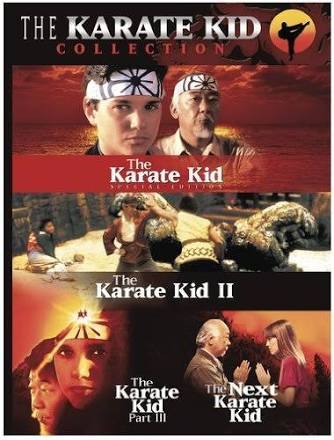 Story structure checklist in The Karate Kid
Story structure checklist in The Karate Kid1. Does each scene, event and character contribute to the protagonist’s outer motivation. The beginning of the story poses an overall question in the viewer’s/reader’s mind that will be answered by the end of the story. In The Matrix, for example, the overall story question is; Is Neo The One?
2. Is each hurdle and obstacle in the protagonist’s path to his goal, greater than the last one?
In The Matrix, the structure checklist receives a tick — Neo’s journey is strewn with obstacles, from not knowing how to fight, from a lack of self-belief, to finally being shot in the chest by agent Smith.
3. Does the pace of your story accelerate to the climax? In the third act of the The Karate Kid, the scenes are spaced closer and closer together—reconciling with Ali, being admitted to the tournament, participating in the initial matches, suffering a broken knee, and taking part in the final match.
4. Is the emotional through line made up of peaks and valleys? In The Karate Kid, the tournament scenes are interspersed with quieter scenes of plotting by the Cobras, coaching, and fixing Daniel’s leg.
5. Is your story chock-full of anticipation? The karate tournament, which we know about from the start, the fights with Johnny, the anticipated attacks after the party, all add to the overall sense of anticipation in The Karate Kid.
6. Are there surprises and reversals to our anticipation? In The Matrix, our expectation that Neo is indeed, The One, undergoes several reversals when he fails to jump across buildings, or when his meeting with the Oracle seems to indicate the contrary.
7. Does the story create curiosity? In The Karate Kid, we wonder how on earth Mr. Miyagi will manage to teach Daniel the requisite skills to stand up to his brutal opponent.
8. Are your characters, timing, and situation credible? The three month period provides enough time for Daniel to acquire fighting skills under the expert tutelage of Mr. Miyagi, but the time is adroitly condensed by the screenwriter so that the audience can stay involved.
9. Are the events in the story sufficiently foreshadowed? Q. How can we possibly believe that a boy with a broken knee and three months training can win a tough tournament? A. By introducing a secret weapon in the form of the Crane Stance and Mr. Miyagi’s healing abilities.
10. Does your story have an effective opening and ending? The Karate Kid uses a new arrival opening from New Jersey to Van Nuys to introduce Daniel, which is appropriate to the slow build up of the story. The final match, a do-or-die confrontation between the protagonist and antagonist, is an appropriate climax which settles the overall question established early in the story: Can Daniel win against all odds?
Summary
The story structure checklist focuses the writer’s attention on important aspects of story construction. Familiarity with such a list makes the task of troubleshooting one’s tale that much easier.
Tweet
The post Structure Checklist for Stories appeared first on Stavros Halvatzis Ph.D..
March 16, 2019
Theme as the Controlling Idea
What is meant by the controlling idea in Stories?
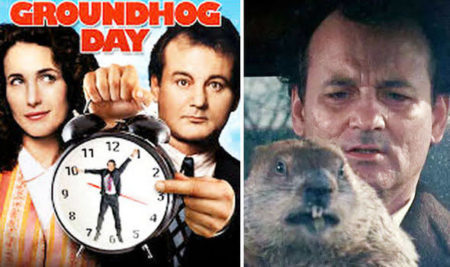 Controlling idea in Groundhog Day: Cynicism and selfishness give way to love and selflessness
Controlling idea in Groundhog Day: Cynicism and selfishness give way to love and selflessnessA story typically comprises of a sequence of linked events, centering on a protagonist who pursues a difficult goal against a rising tide of obstacles orchestrated by the antagonist, (or antagonistic forces). In achieving the goal, the protagonist has to overcome an inner weakness or limitation, which results in his/her becoming a wiser and more accomplished person.
But how do we, as writers, select the most appropriate incidents to relate? Certainly, verisimilitude, suspense, drama, excitement, and uniqueness play a role. But how do we choose between two actions of equal weight, in terms of this list? One way is to let the theme or controlling idea guide us.
In his book, Story, Robert McKee defines the theme, or controlling idea, as he prefers to call it, as a statement expressed in a single sentence that describes how and why life undergoes a change in value by the end of a story.
McKee explains that the controlling idea has two components: value and cause.
The controlling idea identifies the change from a positive to a negative value (or vice versa) at the story-climax as a result of the protagonist’s final action, and provides the main reason for this change.
Value plus cause, McKee informs us, captures the meaning of the story.
Value is the positive or negative charge found at the end of the story. In an up-ending, good triumphs, as in Groundhog Day, where cynicism and selfishness give way to love and selflessness; in a down-ending, negative values prevail. In Dangerous Liaisons, passion turns into self-loathing, resulting in hatred that destroys.
Cause, on the other hand, provides the reason why the protagonist’s world has been transformed into a positive or negative value. In writing a story, we work back from the end value, to the beginning, and trace the causes within the character, society, or environment that has brought about this change.
In Peter Falk’s Columbo, for example, we track back from the theme or controlling idea — Justice is done because the protagonist is cleverer than the criminal — selecting for inclusion only those story beats that serve the theme.
Sherlock Holmes style scenes in which Columbo uses deductive reasoning to corner the criminal are appropriate for a man of superior intelligence and observation skills. Reaching under his raincoat for a .44 Magnum in order to frighten the criminal into confessing, or beating the daylights out of him, is not, although it is a fitting action for Clint Eastwood’s Dirty Harry.
Summary
The theme or controlling idea encompasses a change in value plus the reasons for it. Keeping the theme foremost in our minds assists us in writing appropriate scenes that stay on track.
Tweet
The post Theme as the Controlling Idea appeared first on Stavros Halvatzis Ph.D..
March 9, 2019
How to Keep Your Story on Track
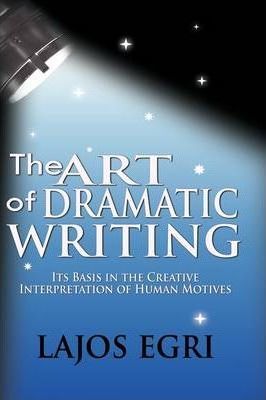 Lajos Egri on how to keep your story in track.
Lajos Egri on how to keep your story in track.TO ENSURE that your story remains on track, complete the first draft of your novel or screenplay, then answer the following questions drawn from Lajos Egri’s work on dramatic writing.
Fill in your answers next to the appropriate question then adjust your story accordingly.
Keep you story on track:
1. What is your story’s premise? For example: “Unswerving integrity delivers from disgrace.” Define the moral premise/theme of your story.
2. What is your protagonist’s goal? What does your protagonist want, more than anything?
3. What is your protagonist’s compulsive, 100% trait? What is your character insecure about? All characters want self-preservation and security.
4. What is your character insecure about? All characters want self-preservation and security.
5. Why is the character insecure about this condition? How did he or she develop that insecurity about the condition?
6. How did the character develop the condition about which he is insecure? What is this injury for which the character has a compulsive drive to escape? Backstory here. Provide a specific event or series of events that explain how he developed the condition. Those events caused a chain of reaction/action/reaction. Tell the tale.
7. What is the crisis that upsets the status quo? How does it affect the protagonist?
Why is the protagonist dissatisfied?
8. What is the dire necessity that spurs the protagonist to action and keeps him relentlessly trying to reach his goal? This is something that threatens his special insecurity.
9. How does hesitation to take action threaten to worsen the protagonist’s situation?
10. What decision will he make or action will he take to change things? This is his point of attack, the decision or action that starts the conflict.
11. Is the protagonist fighting for or against the status quo? Does he want to keep things the way they are, or change them because they’ve become intolerable?
12. Who is your antagonist? He must be diametrically and militantly opposed to the protagonist.
13. Why does the antagonist oppose the protagonist and his goal? What is the antagonist’s motivation?
14. What is the point of 1) contradiction and 2) conflict between them?
15. What is the unbreakable bond between the protagonist and antagonist? What is so much at stake that they can’t leave each other? Multiple reasons are good.
16. What is the wrong step the protagonist makes that starts the crisis?
17. How does this decision create another problem?
18. What does the protagonist do to rectify this new problem?
19. How does this response create another, worse, problem?
20. How does the final crisis, conflict, and resolution prove your premise?
Summary
Answering the set of twenty questions listed above will help to keep your characters and story on track.
Tweet
The post How to Keep Your Story on Track appeared first on Stavros Halvatzis Ph.D..
March 2, 2019
High Concept in Stories
 Jurassic Park is a prime example of a High Concept film.
Jurassic Park is a prime example of a High Concept film.High Concept is a term that’s commonly used in Hollywood to refer to a film or story that contains specific characteristics.
Steven Spielberg has referred to High Concept as a high-level idea that can be expressed briefly, allowing one to hold the entire story in the palm of one’s hand.
High Concept, at its most basic, entails three crucial aspects:
1. It contains a core concept that is unique.
2. It appeals to a large audience.
3. It can be stated in a single sentence, allowing us to “see” the overall story at a glance.
Uniqueness
Of course, no story is truly unique. We’ve often heard that there are only so many stories out there, and they’ve all been told before in one way or another. But this does not mean that elements within these stories can’t be arranged in unique combinations.
Jurassic Park , is based on one of the most successful high concept ideas of all time.
Jurassic Park is a classical monster movie, but the idea that the monsters spring from the DNA of prehistoric animals, which has been preserved in tree resin, was new and unique at the time.
Wide Audience Appeal
This is one of the most difficult elements to pin down. After all, if we knew beforehand precisely what would prove popular with audiences or readers, we’d all be millionaires. Having said that, there are sources that we can look to for hints. The top ten most popular books and movies is a good place to start.
Can Be Stated Succinctly
How is it possible that one can encapsulate and visualise an entire story in a single sentence? Well, that’s what’s so marvelous about High Concept – it’s a pithy statement that allows one to intuit the overall shape of the story in a few bold strokes.
The movie Seven, for example, very much a high concept story, can be stated in one sentence: A serial killer selects and murders his victims based on each having committed one of the seven deadly sins. Although the details are missing, we can easily visualise the general thrust of the story, while being intrigued by the idea of the murder plot being based on biblical sin.
Summary
High Concept is a sentence, describing the story in broad strokes, which encapsulates an element of uniqueness and appeals to a wide audience. Some of the most popular books and movies of all time have effectively utilised High Concept to achieve enduring popularity.
Tweet
The post High Concept in Stories appeared first on Stavros Halvatzis Ph.D..



